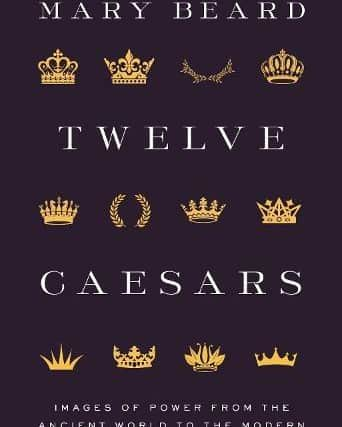Book review: Twelve Caesars, by Mary Beard


Reader alert: if you expect this to be a series of biographical sketches of the Twelve Caesars from Julius to Domitian, perhaps a revisionary companion to Suetonius, look at the sub-title and think again. It is “Images of Power from the Ancient World to the Modern Age.” The book, which is gorgeously illustrated, is based on Mary Beard’s AW Mellon Lectures in the Fine Arts given at the National Gallery of Art, Washington, DC in 2011. It is a work of fine scholarship, directed to fellow scholars rather than to what Virginia Woolf called the common reader. Nevertheless, because Beard is the best known classicist in Britain today and is also an accomplished critical journalist and well-known, thanks to her television work, as a populariser of Roman history and literature, the book is very far from being a Dryasdust work.
There are busts galore of the Caesars and life-size or more than life-size statues too. But how accurate are they? How true to life? These are questions we must often have asked. Faced with the treason of the Thane of Cawdor, Shakespeare has King Duncan say “There’s no art / To find the mind’s construction in the face.” Indeed, in the gallery on the Capitol there is a room of imperial busts. One of these seems delicate, sensitive and refined, but is is in fact a likeness of Commodus, an emperor generally judged violent, untrustworthy and debauched. A portrait from life? A fanciful one? Or not Commodus at all? Other busts of this emperor have him middle-aged and bearded. There’s an illustration of what is now called “the Getty Commodus”, but Beard says we don’t know whether this is “ancient, modern or a mixture of the two.”
Advertisement
Hide AdIn October 2007, French archaeologists exploring the bed of the River Rhone at Arles dragged a marble head out of the water. The director of the team shouted “Putain, c’est Cesar.” Well, naturally, if you happen on an unexpected find, you want it to be someone important and well-known, not, for instance, the bust of a leading citizen of the Roman city of Arles who had perhaps instructed the sculptor to make him as like Caesar as possible. However, “sceptics emphasise how different the head from the Rhone appears to be from Caesar’s portrait on contemporary coins.” Coins may actually offer a truer representation of emperors than portrait busts. After all, they were minted in an emperor’s lifetime.


“Representing Roman emperors kept ancient artists and craftsmen inspired, in business,” writes Beard. “It was production on a vast scale, thousands and thousands...in all shapes and sizes, materials, styles and idioms.” Many were doubtless inspired by likenesses made in an emperor’s lifetime (often his coins). Others will have been based on the verbal descriptions offered by Suetonius in his “Lives” of the Caesars, from Julius to Domitian. But Suetonius, born in North Africa in AD 69, never saw the emperors whose lives he wrote. Presumably he based his description of most of them on busts or statues carved in their lifetime and on written descriptions offered by others, how accurately we can’t tell.
The Renaissance saw a flowering of interest in imperial Rome and its influence can be seen in all the arts. Kings, generals and statesmen were all portrayed as emperors, senators, military commanders. Caesars and Roman poets were everywhere echoed. They still are, sometimes. Consider Alexander Stoddart’s fine statue of a toga-clad David Hume at the top of Edinburgh’s High Street. References to Ancient Rome were not always admiring, however. Beard remarks that presenting kings and statesmen as Roman emperors might seem to emphasise the grandeur of dynastic rule, but also might be seen as evidence of corruption. After all, anyone who had read Suetonius knew how ghastly most of his emperors were.
Beard has written a fascinating book, one to browse happily. It sparkles with ideas, many of them characteristically provocative. Pictorially it is a sheer delight. As for the question of attribution or misattribution, well, you can read this delightful book in the spirit of a detective.
Twelve Caesars, by Mary Beard, Princeton University Press, 384pp, £30
A message from the Editor:
Thank you for reading this article. We're more reliant on your support than ever as the shift in consumer habits brought about by coronavirus impacts our advertisers.
If you haven't already, please consider supporting our trusted, fact-checked journalism by taking out a digital subscription at https://www.scotsman.com/subscriptions